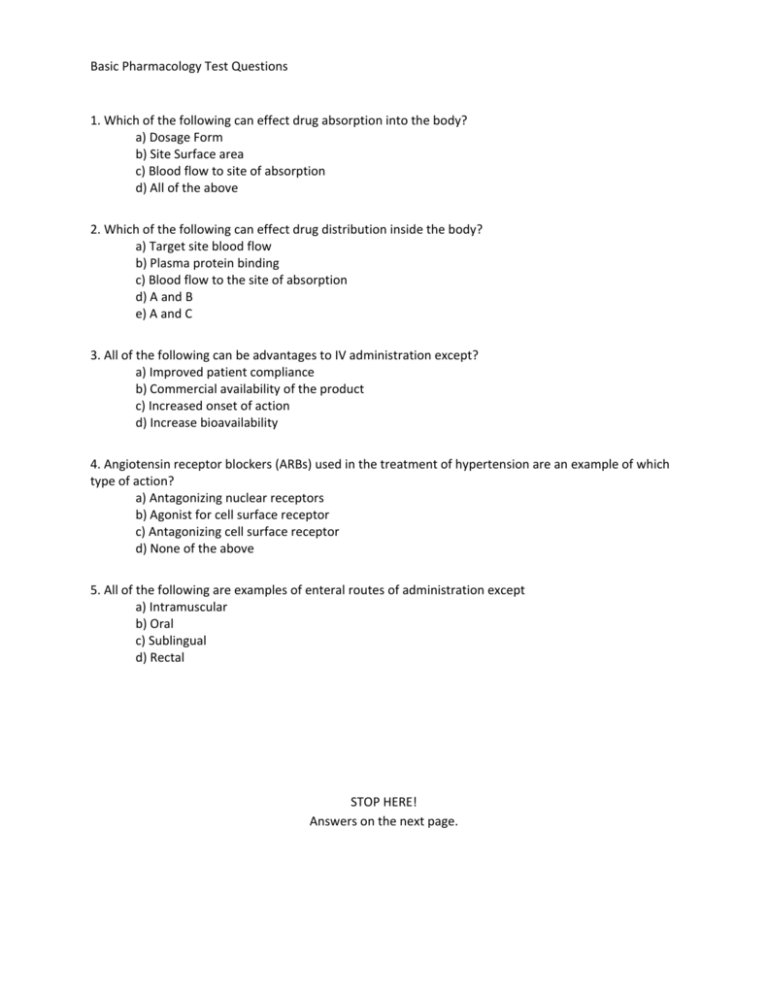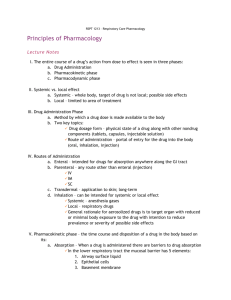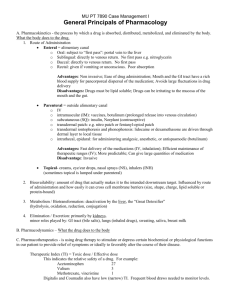Basic Pharmacology Test Questions 1. Which of the following can
advertisement

Basic Pharmacology Test Questions 1. Which of the following can effect drug absorption into the body? a) Dosage Form b) Site Surface area c) Blood flow to site of absorption d) All of the above 2. Which of the following can effect drug distribution inside the body? a) Target site blood flow b) Plasma protein binding c) Blood flow to the site of absorption d) A and B e) A and C 3. All of the following can be advantages to IV administration except? a) Improved patient compliance b) Commercial availability of the product c) Increased onset of action d) Increase bioavailability 4. Angiotensin receptor blockers (ARBs) used in the treatment of hypertension are an example of which type of action? a) Antagonizing nuclear receptors b) Agonist for cell surface receptor c) Antagonizing cell surface receptor d) None of the above 5. All of the following are examples of enteral routes of administration except a) Intramuscular b) Oral c) Sublingual d) Rectal STOP HERE! Answers on the next page. ANSWERS: 1. Which of the following can effect drug absorption into the body? D – all of the above – The hardness of the tablet, the surface area of the site of absorption and the blood flow all change the ability of the product to be absorbed. 2. Which of the following can effect drug distribution inside the body? D – A and B - The amount of blood that reaches the site of action the more likely you are to have a drug action. The amount of drug that remains plasma protein bound determines how much of that drug reaches the target site. The tighter the bond to the plasma protein the less medication reaches the target. 3. All of the following can be advantages to IV administration except? B - Commercially availability of product is limited for IV formulations – there are more than a 100 times the tablets as there are IV products. 4. Angiotensin receptor blockers (ARBs) used in the treatment of hypertension are an example of which type of action? C - ARB’s work by antagonizing the cell surface receptor. 5. All of the following are examples of enteral routes of administration except A - Intramuscular injections are given into the muscle and are considered parenteral routes. The sublingual, oral and rectal route all use the gut as a method of administration and are therefore considered enteral routes.











